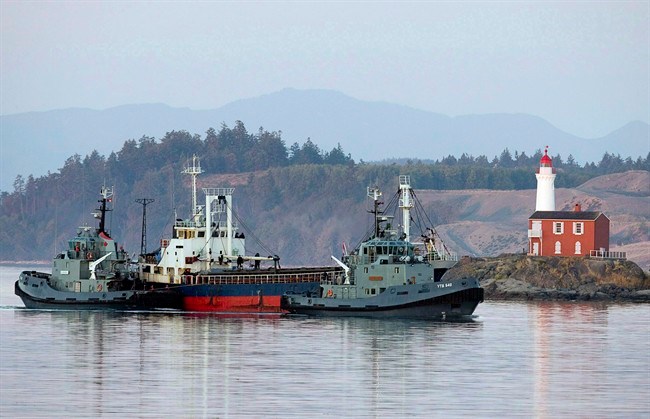When John came to Canada as a refugee in June 2012, he had already fled two war-torn countries: his native country Somalia in 1992 and Egypt in the midst of last year’s violent uprising.
He was sponsored privately by a community group in Winnipeg, which meant he didn’t have to endure the years-long waiting game government-sponsored refugees are subjected to. He’s now living in Victoria and has a good job where he advocates for other refugees. His name has been changed to protect his identity because he fears reprisals from speaking out.
John sees a changing landscape in Canada’s assistance for refugees and asylum-seekers. He worries it will be more difficult to sponsor family members in Somalia.
“It is already difficult since Bill C-31,” he said, referring to the sweeping refugee reforms passed in June 2012. “Now you’re making the process harder, people won’t stop, they will risk their lives more.”
That message is echoed by a new Harvard Law School study that portrays Canada as a country that’s increasingly slamming its doors on asylum-seekers and contributing to the human-smuggling crisis the reforms are trying to combat.
The report by the Harvard Immigration and Refugee Clinic, released Tuesday, says the federal government is making it so difficult for refugees to claim asylum that it’s pushing them into the hands of human smugglers, which puts lives at risk.
“This report points to an alarming trend,” said Deborah Anker, clinical professor at Harvard Law School and director of the Harvard Immigration and Refugee Clinic.
“The Canadian government has repeatedly asserted that Canada’s borders are open to genuine refugees and that Canada’s refugee system is among the most generous in the world,” said Efrat Arbel, a graduate of Harvard Law School’s doctoral program, who co-authored the report. “But in fact, our research shows Canada deliberately closing its borders to asylum-seekers, and avoiding its refugee protection obligations under domestic and international law.”
Bill C-31 implements mandatory detention for asylum-seekers who arrive in large groups by boat and prevents legitimate refugees who come via “irregular arrivals” from applying for permanent resident status or family reunification for five years.
The reforms also made it more difficult for people to claim asylum if they’re from designated safe countries that the government says do not typically produce refugees.
Former immigration minister Jason Kenney said the changes were aimed at cracking down on human smugglers and introduced mandatory minimum sentences for people found guilty of human smuggling.
The bill was ushered in after the arrival of two migrant ships off Victoria: the Ocean Lady, which arrived with 76 Tamil men in October 2009, and the MV Sun Sea, which arrived 10 months later with 492 men, women and children on board.
Alexis Pavlich, spokeswoman for Immigration Minister Chris Alexander, defended Canada’s record in protecting refugees, saying Canada welcomes one out of every 10 refugees resettled around the world, more than almost any other country.
“In 2012, Canada was ranked No. 1 as the country with the highest volume of resettled refugee arrivals per capita, according to the UNHCR Global Trends,” Pavlich said in an email.
“We are world leaders with respect to refugee protection, including recent commitments to resettle refugees from Iraq, Iran, Bhutan and Syria, for example.”
Vancouver refugee lawyer Peter Edelmann, who has represented migrants from the Sun Sea and Ocean Lady, said it’s not surprising Canada’s tough refugee reforms are getting international attention.
“It’s definitely helpful for Canadians to be aware of the impact of these changes and the policies that the government has implemented,” Edelmann said. “Hopefully, the report helps to bring those issues to the public.”
In addition to the recent reforms, the Harvard study also analyzed the U.S.-Canada Safe Third Country Agreement, implemented by Canada and the United States in 2004, which requires refugee claimants to seek protection in the first country they reach — either the U.S. or Canada.
The report said the agreement “has prompted a rise in human smuggling and unauthorized border crossings, making the border more dangerous and disorderly,” Brenner said.
That’s backed up by a declassified document, obtained by The Canadian Press under the Access to Information Act, that shows smugglers were caught trying to sneak dramatically more people into Canada in 2011 than over the previous year at largely unguarded Canada-U.S. border crossings.
The binational report said 487 people were apprehended in 2011 as smugglers attempted to spirit them into Canada at remote locales. That’s up from 308 in 2010.
— With a file from The Canadian Press



